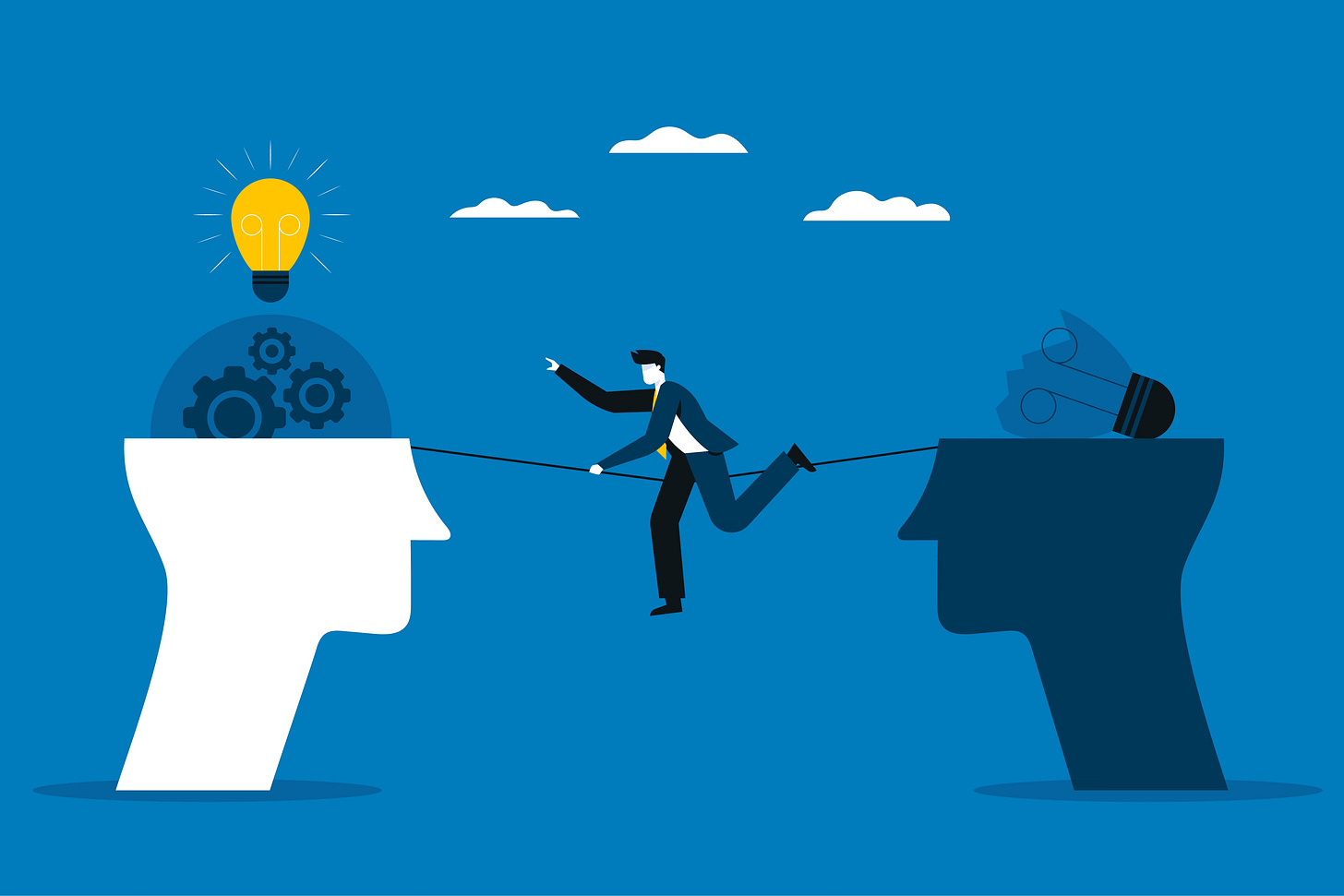Don't Let Yourself Sleepwalk to Tomorrow
I watched it happen in every workshop.
A bright marketing professional—let’s call her Sarah—came to one of our workshops excited about AI. She’d been using ChatGPT for three months and was convinced it had made her “10x more productive.”
I gave her a simple exercise: “Ask your AI assistant to develop a customer segmentation strategy for this product.”
Thirty seconds later, she had a detailed answer. Geographic segments. Psychographic profiles. Behavioral indicators. It looked impressive.
Then I asked: “Is this accurate?”
She blinked. “Well... it sounds right?”
“But is it accurate? What evidence supports these segments? How would you verify them?”
Silence.
Here’s what had happened: Sarah had learned to generate answers. But she’d stopped learning how to think.
She wasn’t alone. Across every workshop, every consultation, every training session, I see the same pattern emerging. We’re creating a generation of professionals who can produce sophisticated-looking work without understanding the fundamental question that should precede every AI interaction:
Is this answer actually true?
The Crisis in Learning
As educators, whether formal or informal, we’re facing an unprecedented challenge. For the first time in human history, access to answers is no longer the constraint on learning.
This should be liberating. Instead, it’s created a crisis.
The traditional model of learning was built on scarcity:
Information was hard to access. That’s why we taught people how to find it
Answers were expensive to produce. That’s why we taught people how to generate them
Knowledge was concentrated. That’s why we taught people how to acquire it
But now? A student can get an answer to any question in seconds. A professional can generate a complete analysis without understanding the domain. A manager can produce a strategic plan without thinking strategically.
The Seductive Trap of “Sounds Right”
Let me show you how subtle and dangerous this problem is.
Here’s an AI-generated customer insight:
“Analysis of purchase patterns reveals that millennial customers demonstrate 43% higher engagement with sustainability-focused messaging, particularly in the premium segment where environmental consciousness correlates with brand loyalty and willingness to pay price premiums.”
Read it again. Does it sound convincing?
Of course it does. It has numbers. Specific demographic references. Professional language. And most importantly it confirms what you already believe about millennials. But this part is the trap.
Most people nod along not because they’ve evaluated the evidence, but because the AI is telling them what they already “know.” It’s performed their existing assumptions back to them in expert-sounding language.
This is where our common sense betrays us. Instead of asking “Is this accurate?”, we ask “Does this match my existing understanding?” When the answer is yes, we stop thinking. We accept the AI’s output as validation rather than examining it as a claim that requires evidence.
We’ve outsourced our judgment to pattern-matching: If it sounds like something an expert would say, and it aligns with what we’ve heard before, it must be true.
But here’s the uncomfortable reality: You have no idea if this is accurate. Neither do I. Neither does the person who generated it.
It might be:
Based on real data from a specific study (evidence-based)
A plausible-sounding synthesis of general trends (educated guess)
A complete fabrication that happens to match our biases (sophisticated nonsense)
Accurate for some markets and completely wrong for others (partial truth)
A pattern the AI learned from business articles repeating the same assumption (circular reasoning disguised as insight)
The AI won’t tell you which one it is. It will deliver all five possibilities with equal confidence, in equally professional language.
And here’s what makes this so sneaky: The outputs that confirm your existing beliefs are the ones you’re least likely to question.
When AI tells you something unexpected, you pause. You think. You ask again. But when AI tells you what you already believe, wrapped in sophisticated language with impressive-sounding numbers, you skip the verification entirely. You treat your existing assumptions as validation of the AI’s accuracy.
This Is The Pedagogical Crisis We’re Facing.
We’ve created tools that don’t just generate information. The tools mirror our assumptions back to us in expert-sounding prose. They turn our hunches into “insights,” our biases into “analysis,” our pattern recognition into “evidence.”
And because we’re not taught to distinguish between “sounds like what I’ve heard before” and “is actually supported by evidence,” we accept the performance of expertise as expertise itself.
We’ve stopped asking “Is this true?” and started asking “Does this sound right?”
Those are not the same question. And confusing them is how smart people make catastrophically bad decisions with complete confidence.
The Mirror We’re Holding Up
We’re not just building tools that generate answers. We’re building tools that reflect our assumptions back to us with perfect confidence.
And we’re mistaking that reflection for reality.
The real danger isn’t that AI will replace us. It’s that we’ll stop noticing when we’ve stopped thinking. We’ll become experts at generating impressive-looking outputs while losing the ability to determine if any of it actually matters.
Twenty-five years from now, we’ll look back at this moment and ask: “How did an entire generation of professionals lose the ability to distinguish between what sounds right and what is right?”
The answer will be simple: We never taught them there was a difference.
What You Can Do Tomorrow Morning
Before you use AI for anything important tomorrow, ask yourself one question:
“If this answer is wrong, what are the consequences?”
If the answer is “nothing much,” then use AI freely. Generate ideas. Explore possibilities. Play it around.
But if the answer is “we’ll waste money,” “we’ll mislead customers,” “we’ll make a strategic mistake,” that’s when you need to think before you act.
Sometime we need a pause. In that pause, we ask:
“How would I verify this?”
“What am I assuming to believe this?”
“What would someone who disagrees say?”
You don’t need to do a full analysis. You just need to notice whether you’re thinking or just accepting.
One Last Thing
If you finish this article and think, “That was interesting, but I’m pretty good at spotting bad AI outputs” No. You’re probably not.
None of us are as good at this as we think. That’s the whole problem. The outputs that fool us are precisely the ones that confirm what we already believe. The mistakes we make are the ones that sound right.
And here’s the reality: AI companies aren’t building this verification into their tools. There’s no “Is this answer accurate?” button. No automatic fact-checker. They won’t build it because verification slows you down. And slow doesn’t sell.
So until AI tools come with built-in accuracy challenges, this responsibility falls on you:
Every time you’ve nodded along to an AI-generated insight without verifying it, you’ve practiced accepting appearance over evidence.
Every time you’ve treated “sounds professional” as synonymous with “is accurate,” you’ve reinforced the habit of not thinking.
Every time you’ve chosen speed over rigor, you’ve trained yourself to value productivity over truth.
These aren’t occasional lapses. They’re the foundation you’re building your professional judgment on.
The question isn’t whether you’re making these mistakes. The question is whether you’re awake enough to notice and brave enough to stay awake.
Don’t let yourself sleepwalk to tomorrow.

